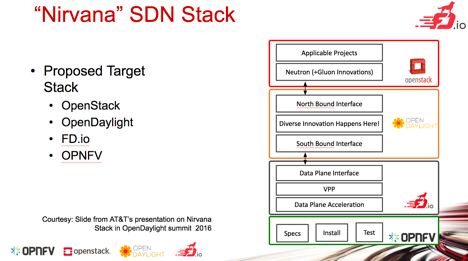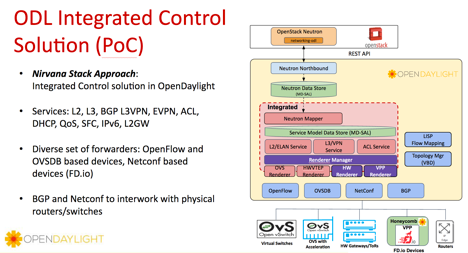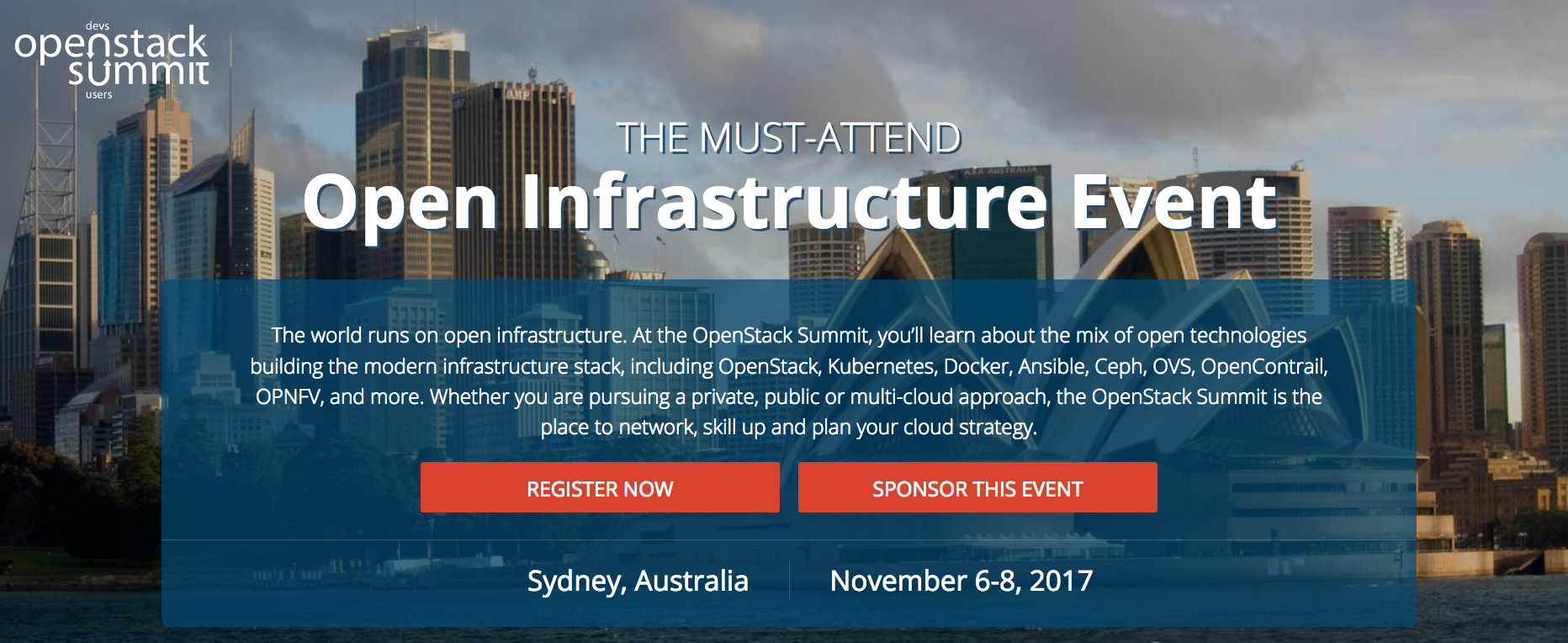
Thank you to OpenStack and to the city of Boston for a great summit! The OpenStack Summit was in Boston, May 8-11. This was the first summit with new format, which separates the general summit from the design summit. Having attended and enjoyed several OpenStack Summits over the years, I was concerned how the new format would play out. My main fear was it would become more commercial and less technical.
Fortunately, my fears were unfounded. The summit delivered, featuring a ton of technical content including in depth sessions, hands on labs, and in all day training sessions. This left me with the welcome problem of difficult choices of how best to spend my time. Do I want to spend all day in a Docker and Kubernetes Bootcamp, or attend a mix of shorter sessions providing updates on various OpenStack projects, including integration via Neutron with OpenDaylight and FD.io, plus some 90 minute hands on labs? Fortunately, the summit is 4 days, and without being called away to attend design session, the developers driving the direction and enhancements in and around OpenStack were free to present and attend worthwhile sessions throughout the entire summit.
Here are some examples of session I enjoyed.
Securing Web Applications with Service Chaining, Hands-on Works
- Securing a multi-tier web application requires a number of security functions resulting in complex layer 3 networking rules introducing error and network latency. Instead, OpenStack can service chain traffic through security functions using layer 2 constructs to reduce complexity and improve performance.
- My favorite example of this was using TCPDump and Snort to monitor traffic and produce alerts when anomalies were detected. Traffic flowed through two NetMon machines to illustrate chaining. The first was the TCPDump monitoring and the second was using Snort. More details available via github.
Introduction to Kubernetes & Docker
- This one day introduction to Kubernetes and Docker provides the fundamental concepts of containerization technology. The course is broken up into lectures and labs. The lecture covers the difference between VM and containers, how Docker popularized containers, and delves into container centric infrastructure with Kubernetes. The labs provide hands-on and step-by-step experience of installing Docker from scratch and multi-container application deployment using Kubernetes. Lastly, students will learn how OpenStack can be used as the overarching cloud software to manage containers and VMs together.
OpenStack and OpenDaylight: An Integrated IaaS for SDN and NFV
- OpenDaylight is an open source project under the Linux® Foundation with the goal of furthering the adoption and innovation of SDN. Red Hat is bundling a distribution of OpenDaylight as part of its Red Hat® OpenStack® Platform, featuring the OpenDaylight NetVirt application as an integrated back-end to OpenStack Neutron.


Easier OpenStack Deployment: Novice Installation Using Kolla
- A key factor in increasing the adoption of OpenStack is offering a straight forward and time efficient deployment process. We created an Ease of Use guide that allows operators with no prior experience with OpenStack to deploy multi-node OpenStack. In this session, we provide participants the opportunity to utilize our guide and complete a full production grade deployment of OpenStack using Kolla.
- Access the guide and try for yourself: https://github.com/inc0/kolla-ansible-workshop
Cisco - OpenStack: The Road Ahead for Cloud Computing Platforms
- As adoption of cloud computing grows and new technology is introduced, open source software is increasingly being used across a variety of applications as more businesses embrace public and private clouds, big data, and machine learning for transforming their businesses. However, computing platforms are simultaneously undergoing a shift from virtual machines to containers, bare metal and even event-based “server-less” models for rapidly assembling distributed systems. This all poses major challenges for businesses trying to cope with an ever-changing technology landscape. OpenStack and its community of developers is in a unique position to help businesses navigate through this transition as it continues to mature the platform while integrating and embracing newer computing paradigms.
- Kudos to Lew Tucker for a great session focused on the OpenStack community. As Vice Chair of the Board, I thank Lew for his guidance and vision with respect to the recent and successful format changes of the OpenStack Summit. When asked about Cisco priorities for OpenStack, Lew cited:
- networking e.g. VPP and FD.io
- containers, through contributions to Kolla project and in CNCF
- Cisco transforming itself as evident by purchase of App Dynamics and putting more emphasis on software as a services (SaaS) e.g. Meraki, WebEx, and Metacloud.
- Runs on OpenStack Running Socks – nyce!

What Does OpenStack Bring to a Containers World?
- The success of the container technologies resides in their capacity to isolate application developers from the base infrastructure. It is therefore easy to fall in the trap of considering that OpenStack, as an infrastructure provider, is not relevant in a containers world. However, container technologies still require someone to provide flexible infrastructure for that abstraction layer to live on. OpenStack provides programmable infrastructure (bare metal, VMs, container orchestration engines, networking or storage services) that can then be used by application developers. In this talk, we'll explore how complementary Openstack is to container technologies like Docker or Kubernetes, and how they answer orthogonal questions in a harmonious way. We'll expose what key issue (and which stakeholders) each solution actually answers to, then dive into examples of where that complementarity already shows: Kuryr, hyper.sh, OpenStack itself using Kubernetes for its own deployment...

OpenDaylight Day
- Introduction to Nirvana Stack and Its Objectives: As carriers gain more experience with open source platforms and start moving from strategies to PoC (Proof of Concept) to implementation, they are looking toward open source networking projects with broad community support that meet their needs, while striking the appropriate balance between functional diversity and practical path to realization. This talk provides an overview of such a proposed open source networking stack (i.e. Nirvana Stack) and its objectives such as ability to support diverse controllers/forwarders within an OpenStack instance, ease of integration, and evolvability to support future needs. The proposed Nirvana Stack in reference is an ODL based controller with a common North Bound Interface (NBI) to OpenStack (with Gluon innovations) and a common South Bound Interface (SBI) to FD.IO/VPP based data plane.

- With its origins dating back to RFC 1163 in 1990, the Border Gateway Protocol (BGP) is well proven to work at internet scale. It is a good candidate for east/west communication between controllers, e.g. OpenDaylight, OpenContrail, ONOS, Nuage. This avoids lock-in to a specific closed or open source controller, and it provides the scalability required for interworking between controllers.
- Toward the “Nirvana Stack”: The Evolution of OpenDaylight Network Control: This talk describes how the OpenDaylight (ODL) NetVirt and GroupBasedPolicy (GBP) projects evolve toward a comprehensive converged solution for network control which can implement network services in a flexible and forwarder independent way. NetVirt and GBP are both network virtualization applications that are intended to support multiple northbound APIs, and southbound protocols and devices. Unfortunately, these two solutions were not built to interoperate. “Nirvana Stack” is a term used to describe a converged SDN stack for Telco environments comprising OpenStack, ODL, FD.io/VPP and OPNFV. The FastDataStacks project in OPNFV currently builds such a stack, but so far only uses GBP. We will provide an overview of the architectures for the current NetVirt and GBP solutions, and describe how groups from both communities have worked together to leverage existing designs and implementations to evolve toward a comprehensive and flexible converged Nirvana Stack.



To conclude, I was pleasantly surprised and quite pleased with the summit. It is important that supporters of open source and OpenStack continue to send/fund participation in the general summit by developers capable of delivering compelling content, answering hard questions, and engaging in deep discussions on topics of interest. I plan to propose a few sessions myself for the next summit, which is in Sydney in November. I suspect it will be difficult to get my proposals accepted, but again, as long as there is plenty of worthwhile technical content, I view this as good problem to have.

